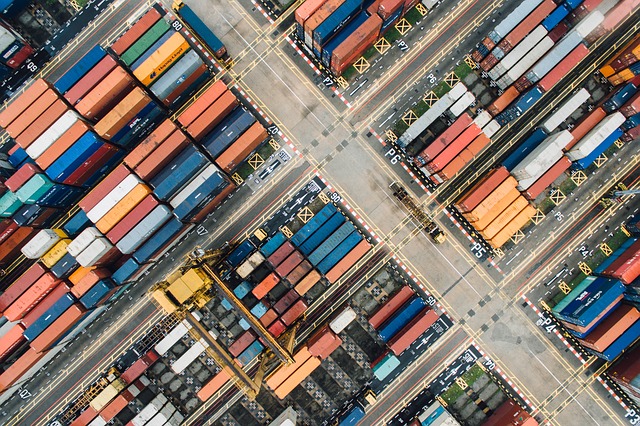Hit by COVID-19, the current global supply chain crisis will become even more evident in the upcoming holiday season. Worldwide, consumers, small and big businesses, and governments must prepare for worse.
The pandemic broke a lot of stuff, wreaking havoc in several critical sectors in business. One of the slower yet equally ugly effects are now starting to show in the global supply chain. Actually, it’s been showing for a while, but the upcoming festive season will completely reveal its gruesome results.
So, if you suddenly can’t find your niece’s favourite toy for Christmas or have to pay dearly for your favourite Diwali mithai in the shops or in online shopping, you know what’s happening.
Plain and simple, the global supply chain is broken. As Reuters calls it, it’s ‘containergeddon’.
A significant part of global interconnected business is predicting when a certain amount of production will be ready along with the date a customer will receive it. Failing this is failing everything
Incidents such as the worldwide massive semiconductor shortage companies recently witnessed is surging. The COVID-19 pandemic-led shift to remote working spiked demand for the critical laptop and phone component.
Consequently, in September, Reliance Industries had to delay the launch of its smartphone it was developing with Google to November. Many automakers have also suspended production.
What happens when this shortage occurs for medicines or food items? Not a comfortable thought.
Not that the pandemic is the only challenge for logistics. The sector is also facing cybersecurity issues.
The major problem, as Fordham Professor Mathew Hockenberry spells out in his tweet, is uncertainty.
15/ In many respects, the real problem here is uncertainty. After all, logistical time isn't fast, or slow. It doesn't actually matter how long a container ship takes, or how much product is on hand. What matters is that you can predict it. Logistical time is regular, routinzed.
— Matthew Hockenberry (@hockendougal) September 16, 2021
A significant part of global interconnected business is predicting when a certain amount of production will be ready along with the date a customer will receive it.
Failing this is failing everything.
16/ Almost every supply chain problem can be traced to a failure in prediction. But usually these are isolated, by geography, by sector, and they have (historically) tended to be relatively short-lived.
— Matthew Hockenberry (@hockendougal) September 16, 2021
The Economics of Supply Chain
Quartz has explained that pandemic induced fluctuations in demand have brought on the bullwhip effect, a supply chain phenomenon that describes how minor fluctuations in demand at the retail level can lead to increasingly bigger fluctuations in demand at the wholesale, distributor, manufacturer and raw material supplier levels.
Other complex concepts we are seeing are stagflation (persistent high inflation combined with high unemployment and stagnant demand in a country’s economy) and just-in-time manufacturing (a production method to mainly reduce time in the production system and response times from suppliers to customers).
The bad news is this is just the beginning
For example, in September, Microsoft had to indefinitely postpone the return of its employees to offices after a spike in COVID-19 cases. These kinds of incidents here and there collectively bring on fluctuations in supply and demand.
The bad news is this is just the beginning.
As Quartz says, “We’ll be dealing with the effects of this for years to come, and it will take governments, companies, and individuals across the global economy to fix it.”
Supply Chain Crisis in Global Retail
Black Friday might not live up to its reputation this year.
As the holiday season nears, the supply crisis is pushing US retail giants like Walmart, Target, Home Depot, Costco, and Dollar Tree to charter their own ships to make sure items like clothing, toys, and shoes reach their destination.
“Vessel chartering is just one example of the investments we’ve made to move products as quickly as possible,” Joe Metzger, US executive vice president of supply chain operations at Walmart told Reuters.
Available technology might be doing its best to deal with the current supply chain crisis, but the scale and extent of this one will require a united effort from other entities as well
California is witnessing record-breaking queues of container ships outside its major ports, waiting to offload. According to ship-tracking website Marine Traffic, over 50 container ships waited outside Long Beach and Los Angeles on 13 October, a number that was 1 pre-pandemic.
“We are facing an unprecedented cargo surge at the ports of Long Beach and Los Angeles due to major global pandemic production shifts and decades-old supply chain challenges,” BBC reported the mayor of Long Beach, California.
Meanwhile, China is facing a worse crisis on its harbours. Companies that are reliant on supplies from Asian countries face a challenging holiday season, owing to frozen supplies emanating from COVID-19 resurgence in countries like Vietnam and Indonesia, and China’s energy supply crisis.
Read more: Tech looks out for tier 2-3 cities as they shop more online than tier 1 cities
At the same time, it’s boom time for shipping operators such as AP Moller Maersk and Hapag Lloyd, who are cashing in on container rate hikes as high as US$20,000 per box on the largest liner ships.
After the appointment of Takayuki Kobayashi, Japan’s new young economic security minister, a space to watch will be the supply chain cooperation between Australia, Japan and India. This also reflects on the broader focus in the Quad group with the US on issues such as critical minerals and cybersecurity.
Startups Tech Up
The current supply chain crisis is going to hit home soon on more fronts than we can imagine right now. SMBs would be better off if they prepare in advance. Some companies are teching up to meet the challenges.
For example, when the 2020 born B2B startup Fashinza raised US $20 million in series A funding this August, they vowed to build a more transparent and sustainable fashion supply chain technology.
The startup connects family-run small/mid-sized audited factories to the cloud with their mobile-based production management and visibility software and are associated with brands like Forever 21, Hummel, Centrix Brands, and Amaro.
The current supply chain crisis is going to hit home soon on more fronts than we can imagine right now. SMBs would be better off if they prepare in advance
Post-pandemic, brands have been scrambling to diversify their supply chains, find new suppliers, and reduce their dependence on a single source. Multiple brands have used Fashinza to diversify their supply chains across countries like China, Bangladesh, Sri Lanka, Vietnam, and India.
Similarly, Bengaluru based enterprise tech startup Syook, which recently raised US$1 million, helps large enterprise companies with their digital transformation journey in operations across the supply chain using their modular, no-code-IOT platform.
The company works with giants like Hindustan Unilever, Reckitt Benckiser, FIAT and the Tata group.
Brace for Impact
Available technology might be doing its best to deal with the current supply chain crisis, but the scale and extent of this one will require a united effort from other entities as well.
Governments, businesses, big and small, as well as all the cogs in this machinery must come together to smoothen the bruises back to where it was. However, this won’t happen soon, so brace yourself.












